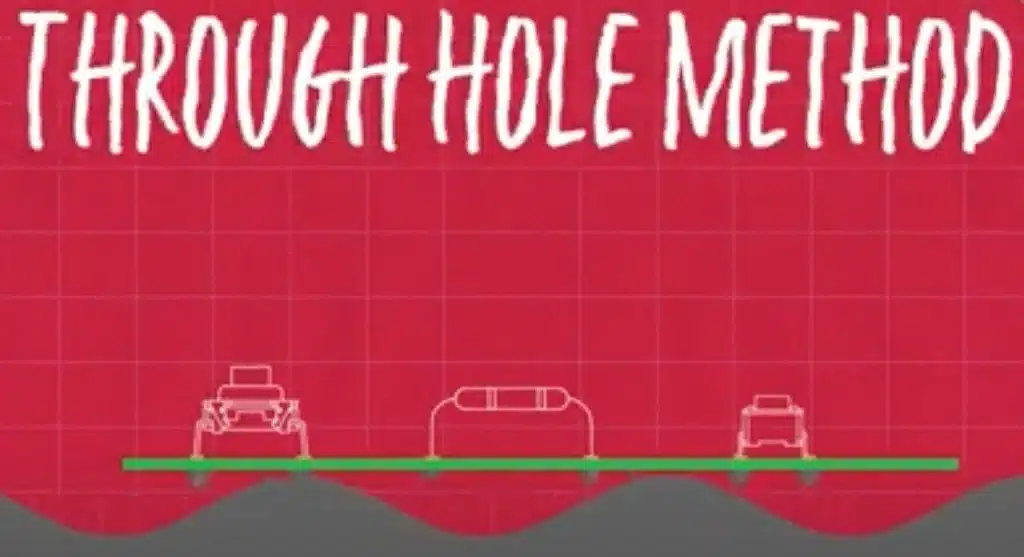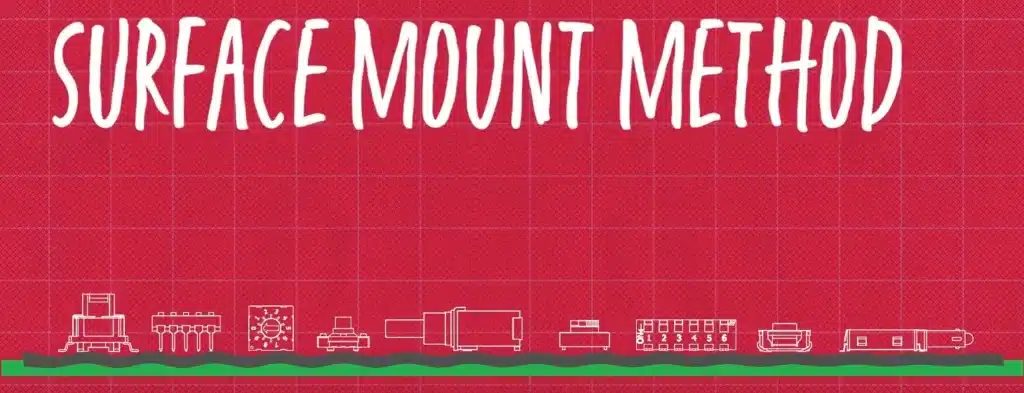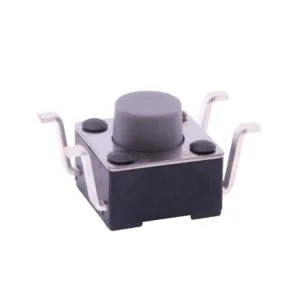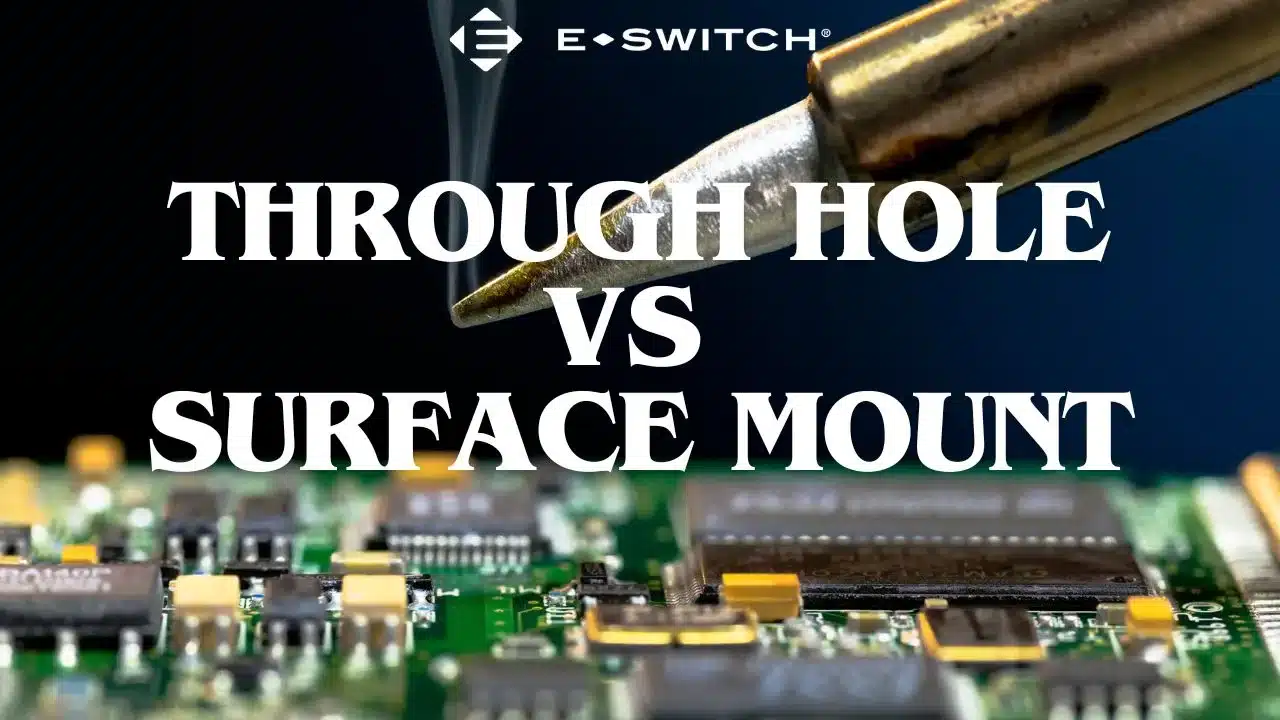What’s the difference between through hole vs surface mount soldering techniques? Through hole technology (THT) and surface mount technology (SMT) are both used in conjunction with a printed circuit board (PCB), but there are big differences between the two mounting technologies and clear reasons why one might be preferrable for your application’s components.
Through Hole vs Surface Mount
Let’s start by looking at the through hole method. Just like the name suggests, the component leads are placed through pre-drilled holes on the PCB and then soldered to secure the component in place. On large scale productions using through hole components, wave soldering is used. This is when the circuit board moves through a solder wave tank, resulting in the application of molten solder to the component pins. A strong bond is created when running the leads through the board, resulting in a component that’s able to withstand harsh mechanical and environmental stress or high heat.

A THT component is easy to change out for testing and prototyping applications that require manual adjustments. Through hole soldering can be done manually or using automated processes, making it suitable for both small-scale and large-scale production.
Now, let’s examine the surface mount method. The surface mount method allows one or thousands of tiny electrical components to attach to their copper contact pads, after which the entire assembly is subjected to a controlled heat.
Solder paste is placed on the circuit board and then the components are added directly onto the PCB. The whole circuit board is then heated up to allow the flux paste to liquify and then solidify to form a bond with the contact pad and components. This method of soldering is known as reflow soldering.

No pre-drilled holes are required, the SMT components are typically smaller and can be mounted from both sides of the board.
Why Use Through Hole vs Surface Mount?
Through hole mounting tends to be more costly and time consuming to pre-drill holes, but it’s more reliable and durable for applications that experience movement and high temperatures. Through hole mounting switches can be placed on both sides of the board in low density.
Through hole soldering is an older technology and is commonly used for components like connectors, switches and some larger components. It requires more PCB space due to the holes and leads, which may limit the design flexibility.
SMT components can be placed up to 10 times faster than THT, so it’s seen as more economical. Paste and switches are quickly placed on the board and moved through the oven and conveyor track, and SMT switches can be placed on both sides of the PCB in higher density.
Surface mount technology is highly suitable for automated manufacturing, allowing for high-speed and high-volume production. SMT components are smaller, which enables miniaturization of electronic devices and greater design flexibility while also having improved thermal characteristics, allowing for better heat dissipation and the ability to operate at higher frequencies.
The choice between through hole and surface mount soldering depends on various factors, including the type of components used, production volume, design requirements and cost considerations. While through hole soldering is still relevant for certain applications, surface mount soldering has become the standard for most modern electronics due to its smaller form factor, better automation capabilities and cost-effectiveness in high-volume production.
Browse E-Switch’s collection of surface mount switches here or take a look at our vast selection of through hole switches.
Reverse Surface Mount Switches

E-Switch offers the RT3301 Series as a top-actuated, reverse surface mount tact switch that measures 6mm x 6mm in size and features a long-life expectancy of up to 100,000 cycles. Applications for the reverse surface mount tactile switch include audio/visual, consumer electronics, medical equipment, telecommunications and more.
Other reverse surface mount switches from E-Switch can be found here, while our selection of reverse through hole mount switches can be found with this link.
